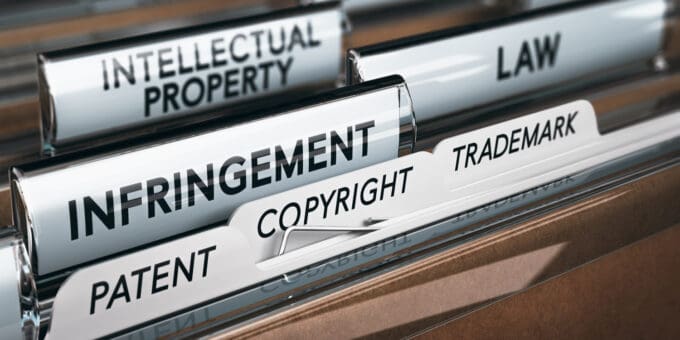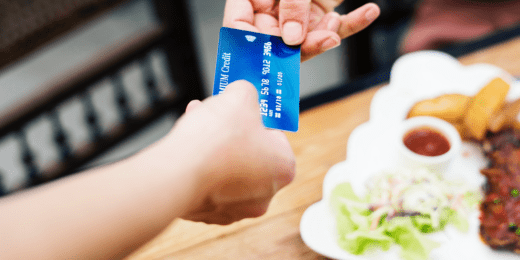Most businesses have certain types of intellectual property (IP) that they need to protect. Sometimes this IP will comprise a core part of their products or services; more commonly IP will be ancillary but nevertheless important to the business, as in the case of branding.
Let’s take a look at the different types of IP and how these can be protected by businesses.
Copyright protection of intellectual property
Copyright is an automatic IP right that protects various creations, including:
- Original literary, dramatic, musical, and artistic work
- Computer software and databases
- Sound, music, film and TV recordings and broadcasts
- The layout of published editions of written, dramatic and musical works
Owning the copyright to a work prevents others from:
- Making, distributing, renting, or lending copies of the work
- Performing or showing the copyrighted work in public
- Uploading it to the internet
Copyright protection is automatically vested in any creations – there is no registration requirement.
Although it is best practice to ensure that copyright material is marked with the “©” symbol along with the name of the author/creator and the date of creation, this is not necessary.
But it is useful to have evidence of the initial creation of the work. For example, sending a copy of the work to oneself in a sealed recorded delivery envelope – in case there is a dispute in the future.
Design rights
Unregistered designs
There are automatic protections of certain designs, notably:
- Design right – the shape and configuration of 3D objects is automatically protected for the shorter of 15 years after it was created or 10 years after it was first sold
- Supplementary unregistered design right – this applies to any 2D or 3D design in respect of its shape, colours, texture, materials, and ornamentation. This IP protection lasts for three years from the date the design is made public
A design must be original and uncommon to be granted automatic protection. It will generally encompass the design of a certain product.
As with copyright, evidence of an unregistered design can be mailed to oneself via sealed recorded delivery.
Registered designs
To gain enhanced IP protections for a design, it needs to be registered with the Intellectual Property Office.
To qualify for registration, the design must be new and original; not be offensive; and not make use of protected emblems or flags.
The protections afforded by a registered design cover its: appearance, physical shape, configuration, and decoration.
The rights granted by a registered design include:
- protection of any aspect of a design, including 3D and 2D elements
- a right to prevent others from using the design for up to 25 years (as long as renewal fees are paid every 5 years)
- more straightforward legal action against infringement and copying of the design
- a registration number that can be displayed on the design
Please note: The functionality of a design cannot be protected as a design right – the way a product works must be protected under patent laws (see below).
Patent protection
The form of IP protection for inventions is known as a patent.
It is possible to obtain a patent for a new invention that has a practical application to any kind of industry. It cannot be purely conceptual, nor can it be merely a modification of an existing invention.
Patent protection affords the owner a right to take legal action against anyone who, in the absence of prior permission, makes or uses, or sells the invention.
Obtaining a patent can take several years, which is why many products are labeled as “patent pending”.
The process of acquiring a patent can be expensive as it requires substantial work. This work is normally carried out by patent attorneys – to ascertain if the invention is actually new and has not already been patented.
There are certain inventions that cannot be patented:
- artistic creations such as literature, music, drama, or art
- business concepts, ways of thinking, or methods of playing a game
- any methods of medical diagnosis or treatment
- mathematical formulae, scientific theories, and similar types of abstract discovery
- the visual presentation of information
- computer software that does not solve a technical problem
- biological processes which are considered “essential”
It is generally advisable to speak to a patent attorney when considering obtaining a patent. But it is also possible to apply directly for a patent with the Intellectual Property Office.
Trade mark protection of intellectual property
A trade mark is a sign which enables a business to more effectively distinguish its products from those of its competitors. It is often a combination of the following elements:
- names, words, and slogan
- logos, symbols, and fonts
- colours and shapes
- sounds and jingles
Trade marks are one of the key elements in building a brand and often enhance marketing effectiveness.
Registered trade mark
Registering a trade mark confers exclusive rights to use the trade mark. Once it has been registered, other businesses will not be allowed to use it unless they get permission.
Obtaining protection with a registered trade mark enables a business to:
- use the “®” symbol, which denotes a registered trade mark, in its marketing and branding efforts
- legally defend their brand – including the use of legal action against other businesses which use their trade mark
- sell and license their brand – such as in the creation of a franchise
To register a trade mark, an application needs to be made to the Intellectual Property Office.
Unregistered trade mark
If a business has not registered a trade mark, it may nevertheless be able to take legal action against another business that uses the unregistered trade mark.
However, this will be under the legal principle of “passing off” and it may be more difficult to prove a claim.
To successfully pursue legal recourse in respect of an unregistered trade mark, the business must prove:
- it had built up significant goodwill associated with the trade mark
- a competitor took advantage of this goodwill by passing off their products using the trade mark.
Trade secrets
Trade secrets, although not an official type of intellectual property, are deserving of some form of protection. Examples of trade secrets are:
- customer lists
- recipes
- internal business information
- technical know-how
It is not possible to register trade secrets. But non-disclosure agreements (NDAs) are routinely used to prevent contractors or business partners from disclosing confidential business information. The unauthorised use of trade secrets can constitute a breach of confidence, in addition to falling foul of the Trade Secret Regulations.
It is worth seeking legal advice on the best ways of protecting any trade secrets or how to deal with any unauthorised disclosures.
Please note that the information provided in this article is for general informational purposes only and does not constitute legal, tax, or professional advice. While our aim is that the content is accurate and up to date, it should not be relied upon as a substitute for tailored advice from qualified professionals. We strongly recommend that you seek independent legal and tax advice specific to your circumstances before acting on any information contained in this article. We accept no responsibility or liability for any loss or damage that may result from your reliance on the information provided in this article. Use of the information contained in this article is entirely at your own risk.








Join The Discussion